AI decisioning: An evolution for customer engagement and 1:1 personalization
Published on September 30, 2025/Last edited on September 30, 2025/6 min read
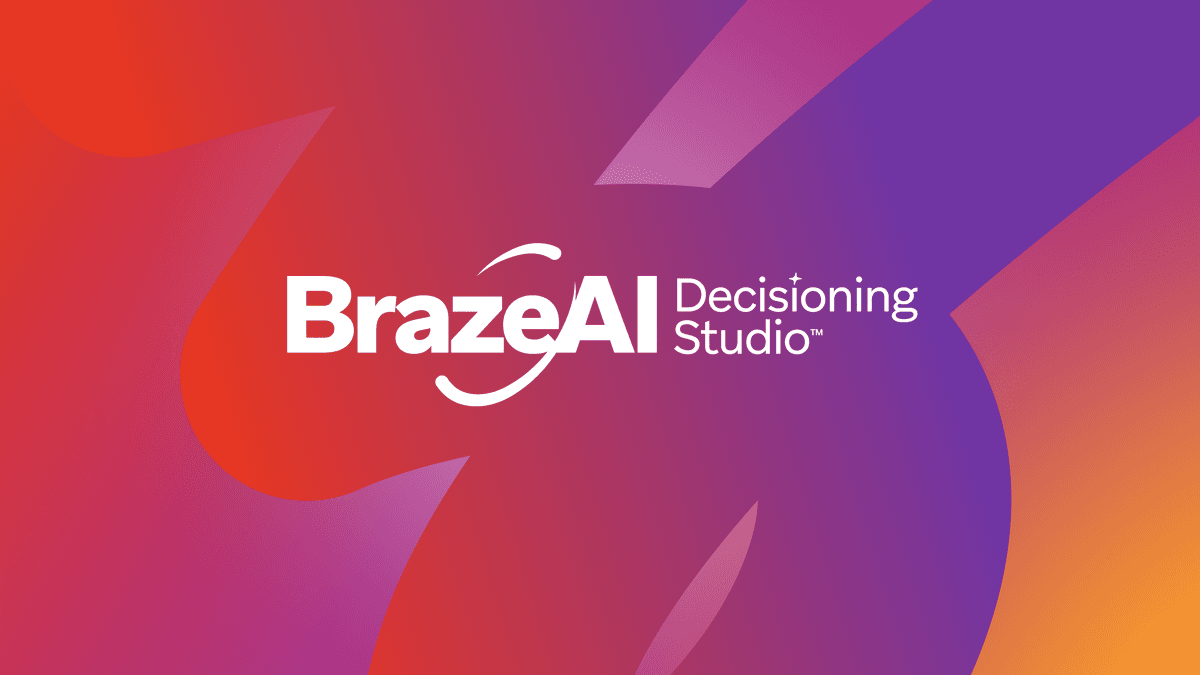

George Khachatryan
VP, Head of AI Decisioning, BrazeMarketing is awash in buzzwords, two of the most prolific being “artificial intelligence” and “personalization.” It’s easy to understand why. As an industry, we’ve been steadily moving closer to the goal of one-to-one marketing, and new technologies help realize that dream. But that innovation brings with it a lot of hype, especially now that artificial intelligence (AI) is taking over so many aspects of our working lives.
To say “AI decisioning can revolutionize the way marketers use data to personalize experiences” can sound like empty promises, especially because we hear these sorts of claims around every new technology. Where it differs is in the details. The new BrazeAI Decisioning Studio™ uses reinforcement learning agents to autonomously experiment and continuously learn from customer behavior. These agents can build lasting relationships with customers by personalizing everything they see from a brand, ultimately leading to a tangible impact on a brand’s bottom line.
Next best action: the not so personal personalization model
For marketers, AI is not new. Most enterprise brands have been using some form of machine learning to personalize their lifecycle campaigns for years. Many are based on next best action (NBA) models, which tell marketers the next action to take with each customer. In principle, next best action simply refers to any algorithm that inputs customer data and recommends an action based on that data.
In practice, NBA models usually start by taking raw customer data and calculating customer features like “purchases in the last 90 days” or “average order value of last ten purchases.” Then these features are fed into a collection of predictive models – i.e., models that score customers on their likelihood to take various actions, such as repurchasing, churning, or buying in a certain category. Then these scores are passed into business rules, which determine the final recommendation.
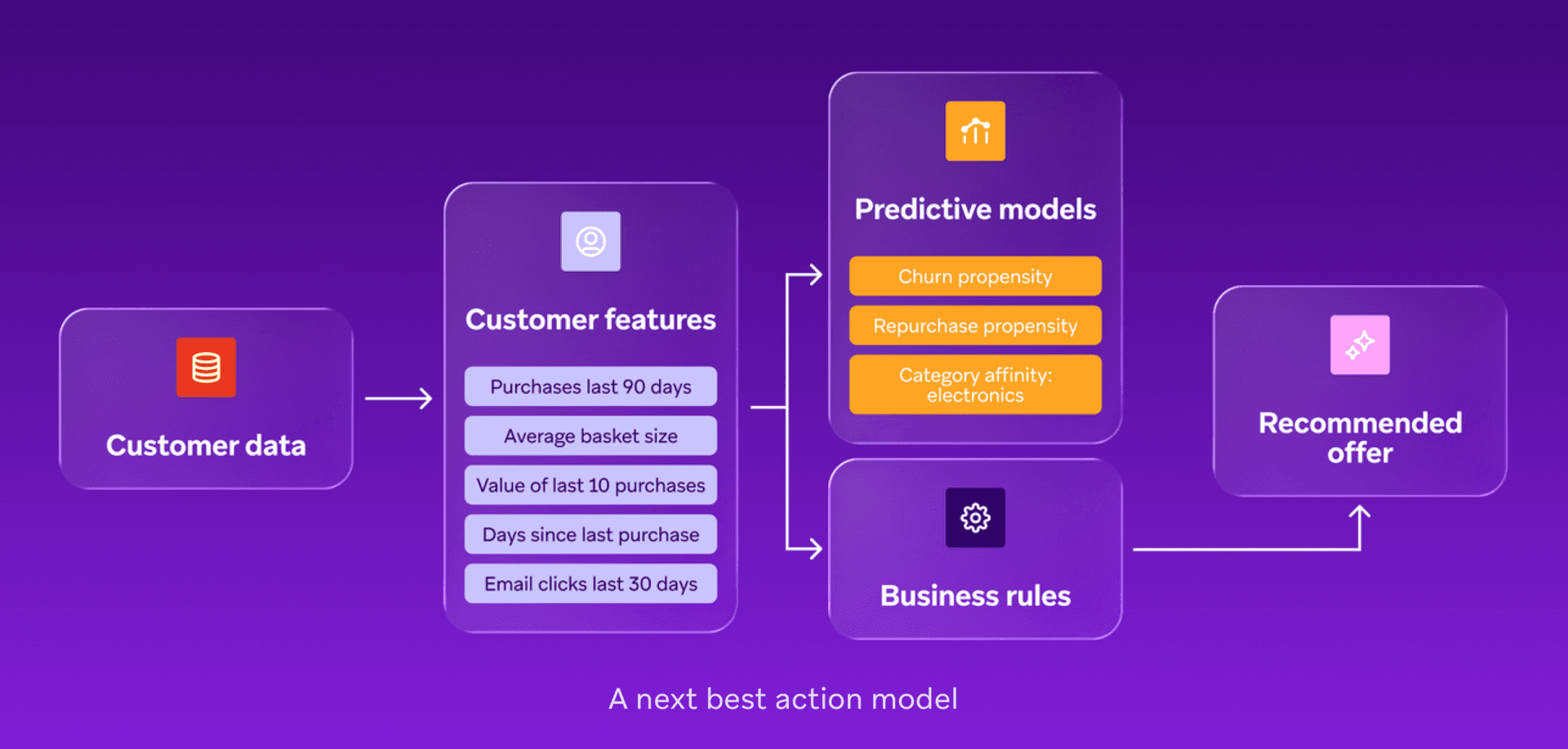
Next best action doesn’t really find the best action
While AI models like next best action were revolutionary for their time, we can see their limitations right away. Let’s say an NBA model recommends a certain pair of shoes as the next best product for a customer. What does that mean? Most likely, the customer had a high “affinity” score for the “shoes” category – i.e., their most likely next purchase was a pair of shoes, based on their historical purchasing behavior. The business rules then stipulated that customers with high affinity scores for a certain category should receive further messages about that category.
There are several problems here. First, just because the customer bought shoes in the past doesn’t mean that marketing shoes is the highest-incrementality action. Second, most companies want to broaden the categories in which customers shop, whereas this traditional NBA approach just creates a counterproductive echo chamber that recommends those things they bought previously. And third, even if this NBA approach yields reasonable (though suboptimal) recommendations on which products to market, it can’t predict how to motivate the customer to engage with an email, push notification, or text message. It does not select the timing, channel, frequency, or creative that would most motivate that customer to make their next purchase.
AI decisioning introduces “next best everything” personalization
Whereas NBA models could potentially recommend the right product for a customer (though even this imperfectly), AI decisioning can motivate customers to act. AI decisioning uses reinforcement models to take what we call a next best everything approach to lifecycle marketing.
AI decisioning is a new approach to personalization that uses reinforcement learning. AI decisioning can find not only the next best product offer, but the best channel, time of day, day of week, frequency, message, creative, or any other dimension necessary for a unique customer to convert.
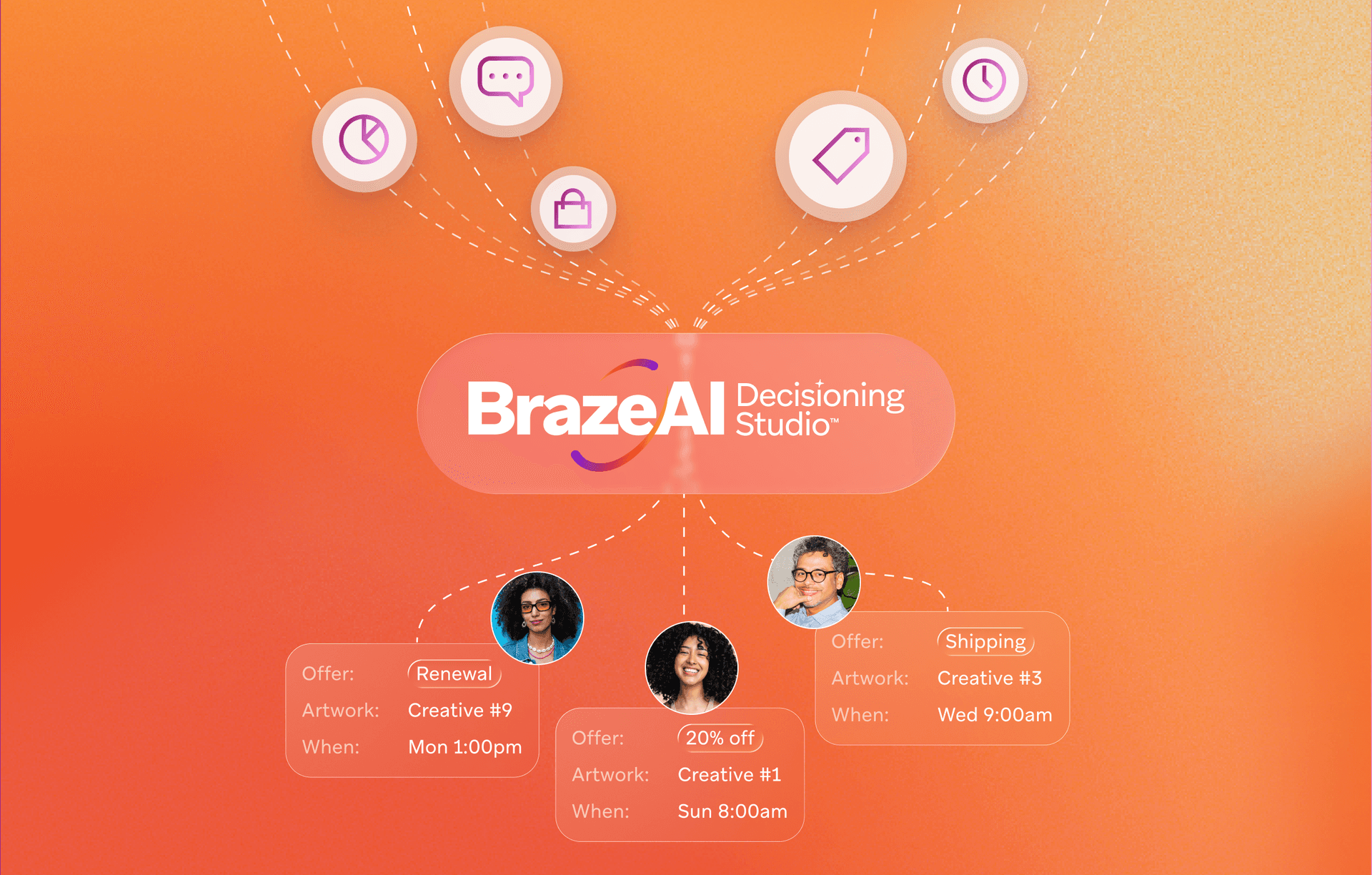
An AI decisioning agent learns from its environment, iteratively choosing from a set of actions, receiving rewards for positive outcomes and learning from those rewards, then choosing another action based on what it learns.
AI agents are constantly experimenting in the background, eliminating the need for manual testing. Doing so allows the model to continuously learn and adapt, allowing for flexibility when markets or customer behaviors change. And because the models use all first-party data about every available customer characteristic, AI decisioning is making true 1:1 decisions for individuals, not segments.
The future of customer engagement
AI decisioning is reshaping the way marketers deliver 1:1 personalization. By using rich first-party data to create relevant experiences and the individual level, BrazeAI Decisioning Studio™ helps marketers boost engagement and drive meaningful business results.

Braze is building the future of AI-driven marketing, where AI agents allow marketers to become strategic conductors of composable and intelligent capabilities. By meeting customers with actions that motivate them to convert, AI decisioning helps marketers organize their campaigns around the kind of 1:1 personalization that leads to tangible business results.
If you want to learn more, visit the BrazeAI Decisioning Studio™ page today.
Forward-Looking Statements
This blog post contains “forward-looking statements” within the meaning of the “safe harbor” provisions of the Private Securities Litigation Reform Act of 1995, including but not limited to, statements regarding the performance of and expected benefits from Braze and its products and features, including without limitation BrazeAI Decisioning Studio™. These forward-looking statements are based on the current assumptions, expectations and beliefs of Braze, and are subject to substantial risks, uncertainties and changes in circumstances that may cause actual results, performance or achievements to be materially different from any future results, performance or achievements expressed or implied by the forward-looking statements. Further information on potential factors that could affect Braze results are included in the Braze Annual Report on Form 10-Q for the fiscal quarter ended July 31, 2025, filed with the U.S. Securities and Exchange Commission on September 5, 2025, and the other public filings of Braze with the U.S. Securities and Exchange Commission. The forward-looking statements included in this blog post represent the views of Braze only as of the date of this blog post, and Braze assumes no obligation, and does not intend to update these forward-looking statements, except as required by law.
Be Absolutely Engaging.™
Sign up for regular updates from Braze.
Related Content
View the Blog
The new inbox reality: How iOS changes are reshaping email marketing

Aparna Prasad

Experience optimization: Turning data insights into better journeys
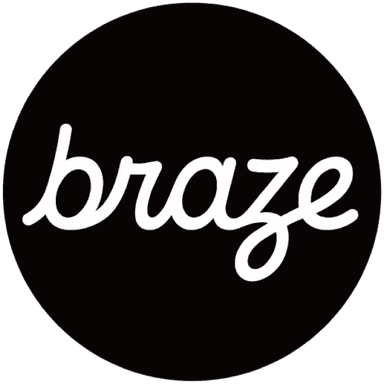
Team Braze
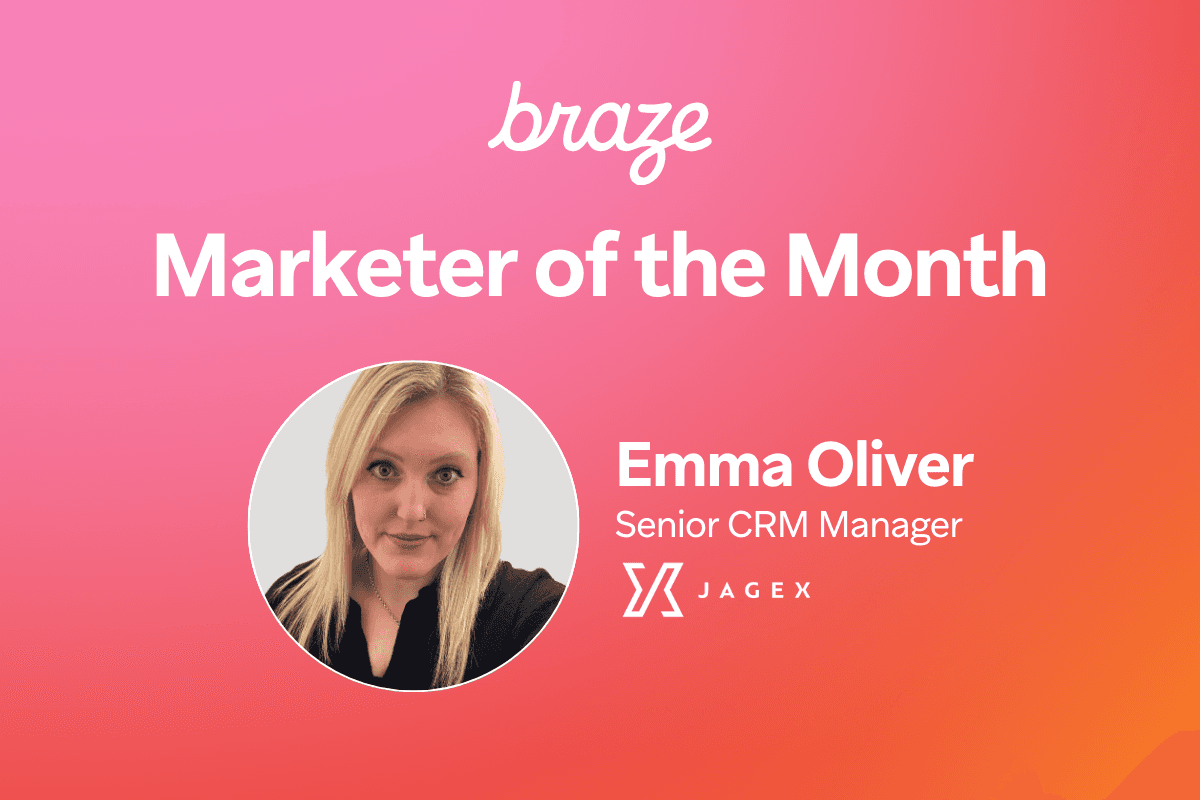
December 2025 Bonfire Marketer of the Month: Jagex’s Emma Oliver
